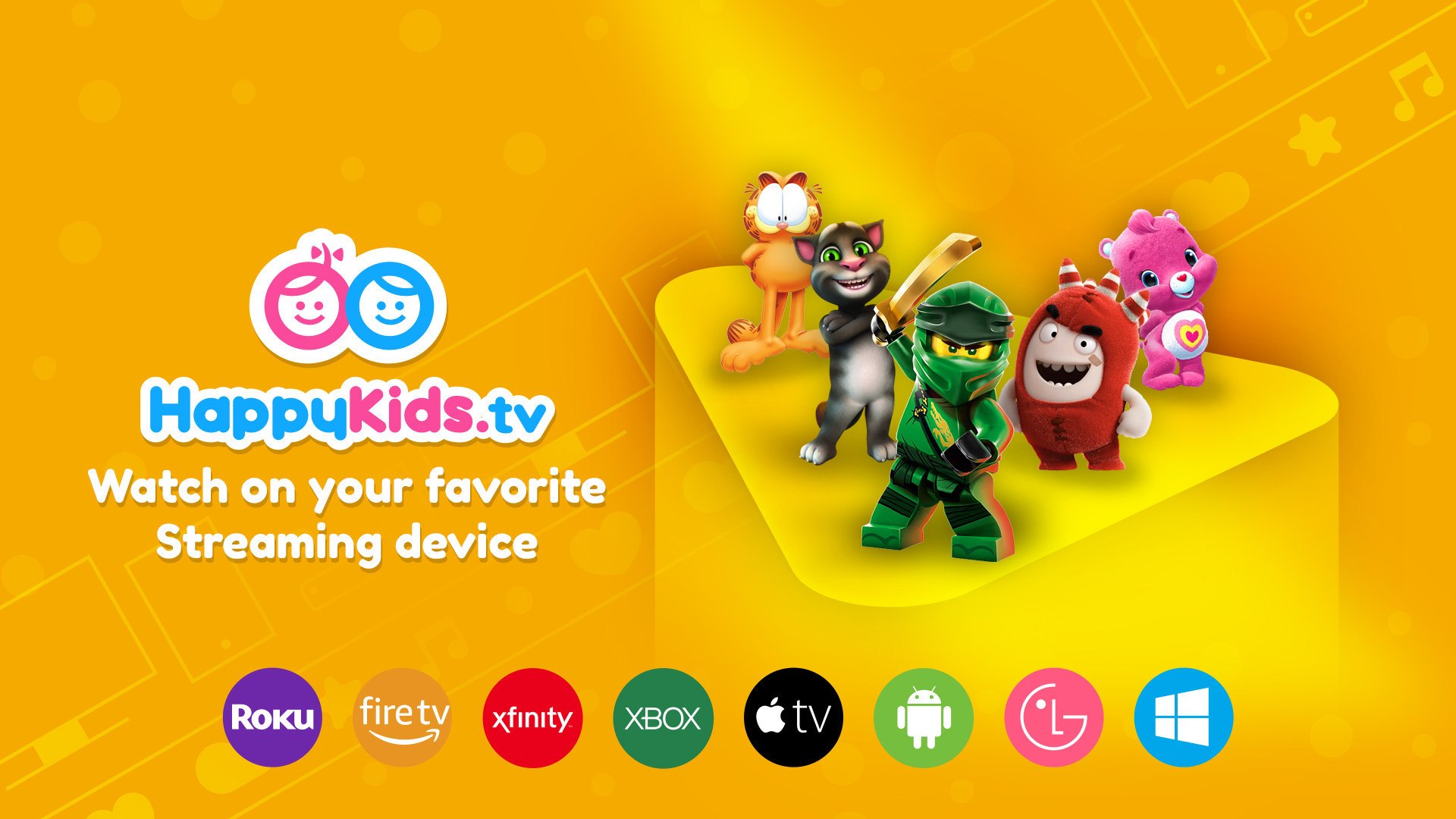Future Today Finds Its Footing After Failed Cinedigm Dalliance
CEO Vikrant Mathur says viewership is up big across Future’s FAST channels, including a whopping 160% for HappyKids

A failed corporate merger can cost a company many months of strategic uncertainty and lost opportunities, as happened in 2019 for Future Today, the long-time parent of dozens of ad-supported streaming channels, after a potentially transformative deal with Cinedigm failed.

“After Cinedigm, we wanted to take a couple of years to just take a breath and get our business back on track,” said CEO Vikrant Mathur, who co-founded the company way back in 2006 with Alok Ranjan. “Because that was the most disappointing thing for me that came out of the Cinedigm transaction was the time lost. That held us back quite a bit.”
But now the OG streaming provider is riding the industry-wide wave of new connected-TV viewers while expanding beyond its long-time base into new growth areas. And with the reinvigorated company, Mathur said, “I almost feel like a kid in a candy store.” Now it’s ready to brag a little bit.
For one thing, the company streamed more than 63 million hours of content in November across all its platforms, up 85% year over year from an also strong 2020, Mathur says. The company now provides viewers with access to roughly 240,000 assets, including 40,000 movies and TV shows.
Viewing on HappyKids, the family programming channel, is up 160% in the last quarter. Fawesome, its other big channel, is up nearly 80%.
The company launched its own production studio for HappyKids content about four years ago, in an effort to plug some holes the company saw in its offerings. The studio’s first original show was for pre-schoolers, Hippy Hoppy, an initiative that has paid off big with more than 1 billion views of its episodes over those four years, Mathur said.
Bolstered by that initial success, Future Today went on to produce 15 to 20 more original series, comprising around 3,000 episodes. The company recently began commissioning co-productions with some of the brands it partners with on various channels. Using the company’s deep data, it identified some promising categories for co-productions, including two new shows focused on video games that have proven popular.
NEXT TV NEWSLETTER
The smarter way to stay on top of the streaming and OTT industry. Sign up below.
“When we commissioned these projects, we look at viewership, we look at eyeballs that we can drive to this content, and that's really our key benchmark,” Mathur said. “Within three months of launching those two shows, they've exceeded our expectations in terms of viewership that we thought they would get over the first year.”
What isn’t happening yet is licensing those originals to other platforms, Mathur said.
“Going forward, I think exclusivity of content is going to become more and more important,” Mathur said. “And to the extent that services could offer exclusive or original content, I think that would set them apart. So we’re following that trend.”
That said, like any smaller company tangling with trillion-dollar competitors, Future Today has to be “mindful of our expenses and the cost” in a hit-driven business, Mathur said. “We don’t have the capacity to produce 50 shows on the hope that one sticks. So we have to be a little cautious given that we bootstrap the company and don’t really have a bigger entity that can finance these things. So we’ve been a little careful about that.”
Things are coming together on the business side too, Mathur said, with advertising CPMs in November up 25% year over year. The company launched linear FAST channels on the Roku Channel, Vizio and other hardware makers’ services, and now has 110 million user-app installs across all platforms. Being everywhere is important for streaming services.
“As I look at the ecosystem, I feel like CTV is more like TV now than ever before,” Mathur said. “By that I mean the OEMs are the new cable operators. And we guys are, hopefully, the next generation of networks that are carried through these platforms.”
That said, the company also expanded into Canada in 2021, thanks to a deal with traditional MVPD Rogers Media, which Mathur said has been “going well” in its initial months. The company also has distribution with Comcast’s Xfinity, among many other outlets. Alongside all that, the company has ramped up brand marketing around its biggest channels.
“Generally, we've been investing more in marketing, in audience development, brand building,” Mathur said. “So there's a more conscious effort now, to just be out there in front of the consumers and try to be as top of mind for them as possible.”
It marks a shift in company thinking, which typically effaced the corporate brand to focus on its vast collection of niche channels, led by “owned and operated" flagships Fawesome and HappyKids.
“These are really the two main brands, where we've seen a lot of uptake and viewership,” Mathur said. “And that's where we see most of most of the consumption happening."
Mathur now classifies the company’s iFood.tv channel — a mashup of food, lifestyle and “home and garden type of brand” programming — as another O&O flagship, something he didn’t routinely mention three years ago.
The company also runs what Mathur calls “the platform side of the business,” providing the back-end distribution and production help for those branded channels from media companies, content owners and others. That’s been a sturdy source of growth as more content owners seek to control more of the distribution business around their programming.
“One of the things that we are very, very proud of is the average daily watch time that we see on the platform, Mathur said. “It’s roughly about two and a half hours. Based on my conversations in the industry, I think we're on the extreme end of engagement and daily watch time. That's a function of the discovery that you're providing to the users, it's a function of the overall user experience, and it’s a function of the stability of your platform, when things should not crash, apps should not break.”
That latter issue is important, sad Mathur, an engineer by training. Interfaces are tricky things, especially when ambitious partners want “a very fancy glossy magazine style with a very slick user experience,” Mathur said. “I remind them that the devices (these interfaces run on) are $29 interfaces. They barely have a CPU and some memory. At the end of the day, what people want to do on TV is watch video. It's not about making the most fancy UI; it's about getting people to the content and letting them watch.”
Help is on the way for app makers, because OEMs now realize the value of a better and more stable interface. Mather said they’re focusing increasingly on “creating a more robust ecosystem” on their TVs, trying to take back control of the screen from the dongle makers.
The improved focus on the ecosystem should help everyone as connected TVs become the dominant way people watch video.
“We believed in CTV a long, long time ago, we believe in free ad-supported (TV), we've been pushing the envelope in terms of what the product is supposed to do, and how it's supposed to appease the audience,” Mathur said. “And so, I feel like we're in a very good place where, from an ad-supported standpoint, there's going to be tens of billions of dollars of advertising dollars that are going to flow into the system over the next three to five years. You can literally count on your fingertips who the beneficiaries of that influx are going to be. I feel like we’re in that group.” ■
David Bloom of Words & Deeds Media is a Santa Monica, Calif.-based writer, podcaster, and consultant focused on the transformative collision of technology, media and entertainment. Bloom is a senior contributor to numerous publications, and producer/host of the Bloom in Tech podcast. He has taught digital media at USC School of Cinematic Arts, and guest lectures regularly at numerous other universities. Bloom formerly worked for Variety, Deadline, Red Herring, and the Los Angeles Daily News, among other publications; was VP of corporate communications at MGM; and was associate dean and chief communications officer at the USC Marshall School of Business. Bloom graduated with honors from the University of Missouri School of Journalism.

